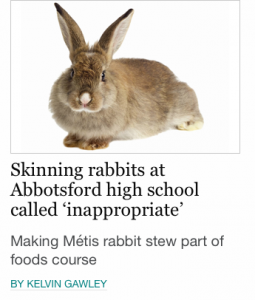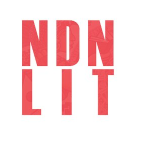Upon working through the rough copy of the final assignment in ETEC 521, it became apparent that there were many holes within my research. Many of the articles in which I read, for example D. Dehyle’s “From Break Dancing to Heavy Metal”, B. Bonar’s “Can hold us back! Hip-hop and the racial motility of aboriginal bodies in urban spaces” and A. Woloshyn’s “Hearing Urban Indigeneity in Canada: Self-Determination, Community Formation and Kinaesthetic Listening with A Tribe Called Red”, have explicitly, and rather thoroughly, stated the significance of Indigenous bodies in self-representation and self-determination. Michel Foucault is widely acknowledged as creating highly influential work that explores the relationship between body and power structures. Even though his name is not explicitly mentioned in any of the three previous articles, I felt further understanding of the issue, and his work, would be especially insightful when exploring indigenous bodies in hip-hop and the relation to the structures of power; consequently, some of the sources that I recently selected explore the application of Foucault’s work to relationships of power between government/state and Indigenous bodies.
I was also interested in further exploring different genres of Indigenous hip-hop. A Tribe Called Red courts an entirely different audience than much Indigenous gangster rap. Dehyle’s article concludes that some Indigenous youth from Dakota have essentially given up on the fight against traditional power structures and embraced the rebellious, fatalistic and highly marginalized world of heavy metal music. I wondered if the Indigenous youth attracted to gangster rap feel similar to their heavy metal counterparts.
Evan J. Habkirk and Janice Fosyth
Truth Reconciliation, and the Politics of the Body in Indian Residential School History
http://activehistory.ca/papers/truth-reconciliation-and-the-politics-of-the-body-in-indian-residential-school-history/
This is an interesting article as it examines the role of the body as a means to assimilation within residential schools. The authors perceive the body as a cultural text and highlight the difference between traditional Indigenous bodies and those that were sculpted by means of sports at residential schools. I wonder if similar things occur within hip-hip. Popular depictions of the male body in hip-hop celebrate muscle, bulk, strength and power. Although there are many exceptions to this in both Indigenous and African American hip-hop, it does create an expectation for the body that seemingly challenges traditional structures of power. One wonders if assimilation via hip-hop for the Indigenous body is through association with African American norms, and via support of those norms, while defiantly challenging, and confronting, the body of traditional Anglo power.
Joanna Ziarko
Marketing Indigenous Bodies in the Fiction of Leslie Marmon Silko, Louis Erdich and Sherman Alexie
https://muse-jhu-edu.ezproxy.library.ubc.ca/chapter/982967
This is another interesting article as it illustrates how many non-indigenous peoples romanticize First Nation culture and inadvertently create a romantic notion of the past that paradoxically many First Nation peoples are incapable of escaping: there is a hegemonic interpretation of how First Nation people should live. I remember within Sherman Alexies’ The Absolutely True Diary of a Part-time Indian the comedic encounters the Indigenous people of this novel faced with such romantics. However this is far from a laughing matter as healthy acceptance by those on the fringes of hegemonic cultures can help strengthen identity and purpose. Consequently, it is imperative that non-indigenous peoples embrace First Nation hip-hop so that power structures change not through Indigenous peoples fighting the status-quo but rather through non-indigenous persons challenging the status-quo by being respectful, supportive and understanding of contemporary indigenous issues, as illustrated through the art of these people.
Robyn Bourgeois
Colonial Explotation: The Canadian State and the Trafficking of Indigenous Women and Girls in Canada
http://web.b.ebscohost.com.ezproxy.library.ubc.ca/ehost/pdfviewer/pdfviewer?vid=1&sid=dc349d83-d1f8-4918-adb5-67004d892ef2%40sessionmgr120
I was interested in this article primarily because it offers an historical perspective to the treatment of indigenous bodies in a colonial context. The author argues that colonialism long sought to eradicate Indigenous bodies as they were an impediment to settlement. Bourgeois sees the trafficking of Indigenous women as a continuation of this practice and posits that colonialism is alive and well today because of it. I was also interested in this article because I am worried about the depiction of Indigenous women in hip-hop produced by those very members that belong to the culture. It has long been argued that much African American hip-hop has very misogynistic depictions of women and knowing that many Indigenous cultures are maternal, I was curious if this reverence would be illustrated in their hip-hop art, or whether they would merely perpetuate the misogyny of their African American counterparts and thereby reinforce traditional colonial practices by commodifying female indigenous bodies.
And More Hip Hop Style Pow Wow
https://www.youtube.com/watch?v=tzPOEgDe2d8
I cam across this video clip when I was in search of other expressions of Indigenous hip-hop culture. It occurred to me that I was focusing primarily on music and ignoring graffiti, break dancing and dj’s. I found this clip rather interesting as it was similar to the typical representations of females in African American rap music. The truth be told, this video made me feel somewhat uneasy. I’m not sure if it’s because I tend to romanticize much First Nation culture and this seemed to me as appropriation, and perhaps even assimilation, into the oft characterized misogynistic world of African American rap and this is not how I wanted to perceive the current state of Indigenous hip-hop culture. However, I do remember watching another documentary explaining how the Anglo American’s disdain for the overt sexuality characteristic of other cultures is a means of controlling these bodies. As many First Nation cultures tend to be maternal in nature I wondered if this depiction of women defied traditional values or is it just a continuation of the Madonna-whore complex, where women are seen as binary in their makeup but men are permitted to embrace their entire sexuality.
Six emerging Aboriginal artists that are inspiring change
http://nationalpost.com/entertainment/six-emerging-aboriginal-artists-in-canada-who-are-inspiring-change/wcm/e1a52bfa-2ceb-4f9d-9557-3c6b07ddcad7
Again, this article captured my interest as I came to the realization that I hadn’t explored elements of Indigenous hip-hop other than music. I attempted to search for examples of break dancing, or hip-hop dance, and graffiti. Unfortunately, there weren’t very many articles devoted to these topics so I did find this interesting introduction to the graffiti of Jesse Gouchey, a Cree artist from Alberta. I was particularly interested in how, or even if, Gouchey would incorporate traditional elements of First Nation art into his graffiti. I was also interested if Gouchey would place his work in public places and make it conspicuous, as the original African American graffiti artists did to promote their culture in a very visible manner. Again, this ties into the theme of Indigenous bodies that I was exploring this week, as graffiti is an art primarily of cultures that are geographically segregated from the prominent cultures within urban centres.
Warriors Off The Res: Aboriginal Gangs in Winnipeg
https://www.youtube.com/watch?v=TlUcsKSbpNI
Lastly, this video explores the similarities between the American gangster rap aesthetic and that found within Indigenous gangs of Winnipeg. Exploring Dehyle’s previously mentioned work, it is suggested that many Indigenous youth abandon the positive messages expressed within the origins of hip-hop for the more fatalistic and defiant world of heavy metal and gangster rap. This may be problematic to liberating First Nation youth from the “two worlds” metaphor that perpetuates colonialism by not permitting the evolution of Indigenous cultures.





